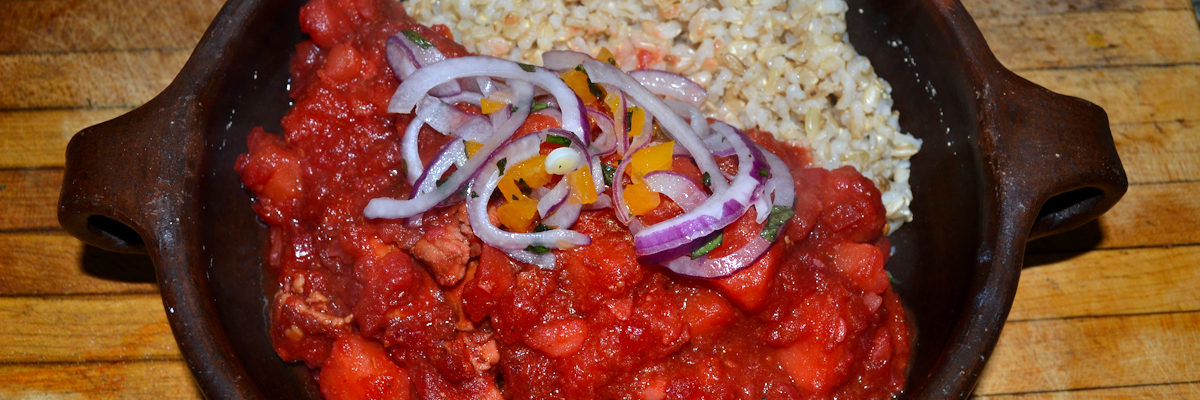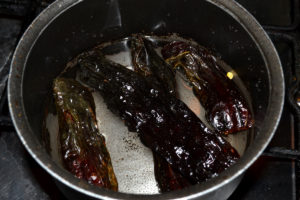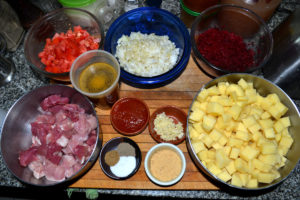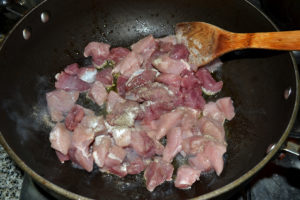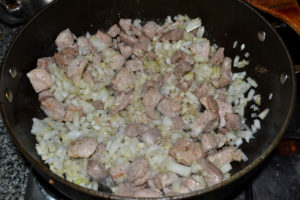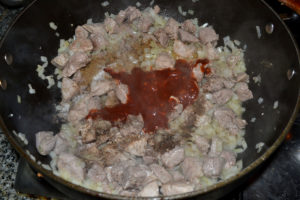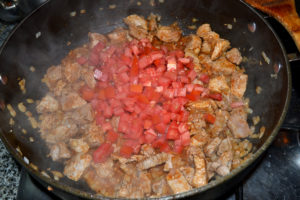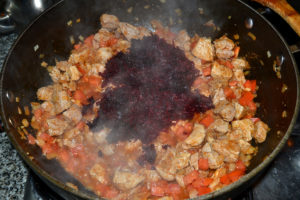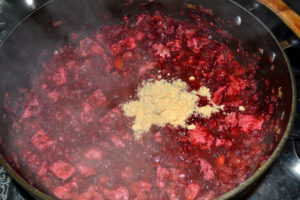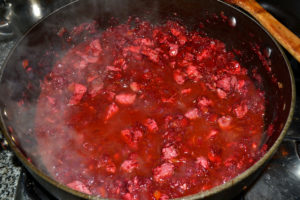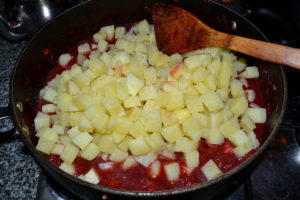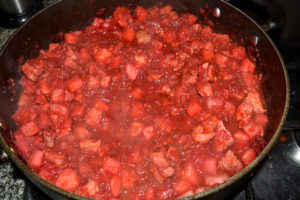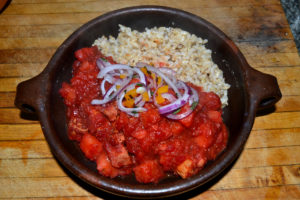Day 2. I mean, again, it’s not really a quarantine, it’s social isolation. I went to the dietetica to buy some brown rice, semolina, and a few other things, and to the city’s mercado itinerante (the daily moving city run food market) which was in our ‘hood yesterday, for some vegetables. And Henry’s same friend popped over again. I get that he’s alone because he just moved here from Peru, but a) he just moved here from Peru, like, last week, and stayed with us for a week (after asking to stay for one night) where there’s more of an outbreak, and b) he’s been here every single day for the last ten, and just comes and sits here at the table reading or studying and/or trying to chat with me, because Henry is spending his time watching TV. It’s this weird Peruvian version of “visiting”, where you just are at someone else’s house, but not necessarily interacting with them.
So what did I have around the house to play with in the kitchen? There was some pork loin, potatoes, beets… ohh…. Puka Picante, it’s a dish from Ayacucho, Peru that I’ve mentioned before, but never done a “step by step”. Let’s do that! Although I’m doing a pork version, you can do this with beef, chicken, or vegetables.
Back in the days of the Incas, there was a warrior of the Chanka people, who lived near to Ayacucho in Huamanga, and, as was his task for his people, he went daily to the battle lines to fight against the Incan soldiers (belying the claim often made that the Incas only incorporated other cultures through peaceful trade and agreement). One day, he returned to his fields, where he rested, covered in blood and in pain, and cried out “puka” at the sight (the Quechua word for “red”), and his mother brought him a dish of stewed llama with potatoes and a peanut sauce, colored with achiote so that it was red. Fortified, he returned to battle, was lost, and never returned. Each year during what is now “Holy Week”, though at the time it was a non-Catholic harvest festival, his valor is celebrated with this dish. For the festival it’s often served as part of a “four-color” dish, with red puka picante, white rice, yellow noodles, and black chuño (the fermented and freeze-dried potatoes of the Andes). Over the years, the achiote was replaced by ingredients brought through colonization – the panca chilies, the tomatoes, and/or the beets.
First, rehydrate some aji panka in some simmering water. I only needed two, but it’s a pain to puree in the blender with only two, so I saved half for another recipe. If you don’t have ají panka, another chili paste is fine – maybe guajillo, or even chipotle.
More ingredients than yesterday’s menu…. We have, a kilo (2lb) of diced potatoes (parboil them in salted water – bring to a boil, let them boil for five minutes, then drain); a half kilo (1lb) of diced pork loin (this is a short cook, so you want something lean); a couple of plum tomatoes and a large onion, finely chopped, a large beet, grated, 2 garlic cloves, minced, the pureed paste from two of those chilies, about 2 tablespoons of ground peanuts, 2 teaspoons of salt, 1 teaspoon each of black pepper and cumin, and about 2 cups of beef stock. Not pictured, for the garnish – a red onion, a lime, a rocoto chili (or other chili), and some mint (or parsley, or cilantro).
Brown the pork in a pan with a bit of oil and about half the salt and pepper.
When lightly browned (about 5 minutes), add the onions and garlic and cook for a couple of minutes.
Add the chili paste and the rest of the salt, pepper, and the cumin. Cook for a couple of minutes.
Add the tomatoes, and, yup, cook for a couple of minutes.
Add the grated beet, and… yeah, you guessed it, a couple of minutes.
Ground peanuts, and yup…
The beef stock (if I was making a vegetarian version of this, I’d use vegetable stock). And yes, another couple minutes. By the way, we’re stirring regularly during this cooking. Be active in this time of quarantine, be active!
Add the potatoes, mix in well, cover the pot, and… well this time, it might not be a couple of minutes – it’s probably more like 5-10, depending on how par-cooked your potatoes were. You want to cook until they’re soft, i.e., the texture you want to eat. They shouldn’t be falling apart, but they shouldn’t be crunchy either. On our end, it was about 5 minutes. So all told, from the time you start heating up the pan, about 25 minutes.
Someone brought up with yesterday’s dish whether it could be done in an Instant Pot – I suppose it could, and I suppose this one could too – you could throw it all in and just let it cook – maybe with more stock in there to cook the potatoes from scratch. I get the convenience of throwing everything in a pot and being able to walk away and come back to a meal, but there’s something lost in the process, and I’d bet it won’t taste the same – either today’s dish or yesterday’s.
And, voilà, Puka Picante!
Separately, and no photos, but slice your red onion really thin, and soak it in salted water for a few minutes to remove some of the “raw” bitterness, then drain, and mix with chopped chili, mint, lime juice, and a pinch of salt.
And, serve. Just to mix things up, I paired it with yamani rice, a type of brown rice. But you can serve it with white rice, pasta, or really, as a potato dish, just on its own, maybe with a crusty loaf of bread. It’s a very rustic, traditional dish.
